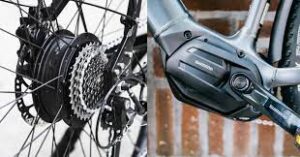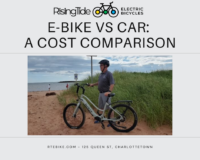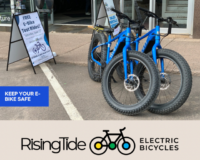1. Eligibility
This contest is open to all individuals aged 18 years and above.
Employees of Rising Tide Ebike Tours and their immediate family
members are not eligible to participate.
No purchase necessary to enter or win.
2. Contest Period
The contest begins on May 13, 2024 and ends on May 31, 2024 at 11:59pm.
3. How to Enter
Entrants must follow @RisingTideEbikeTours on Facebook and Instagram,
like the contest post, and share it on their profile. The profile/post
must be public to be eligible.
For a bonus entry, entrants can tag a friend in the comments of the
contest post. Each tag is considered one additional entry.
4. Prize Details
One winner will receive a free ebike tour for two people, covering
only the guided tour service. Any other expenses (e.g., travel,
accommodations, meals not specified) are the responsibility of the
winner. The prize is non-transferable and cannot be exchanged for
cash.
5. Winner Selection
The winner will be selected randomly at the end of the contest period
and contacted via the platform they used to enter.
The winner must respond within 48 hours to claim their prize. If the
winner fails to respond in the stipulated time, a new winner will be
selected.
6. General Conditions
Rising Tide Ebike Tours reserves the right to cancel or modify the
contest if fraud, technical failures, or any other factor beyond
Rising Tide Ebike Tours’ reasonable control impairs the integrity of
the contest, as determined by Rising Tide Ebike Tours in its sole
discretion. By participating, entrants agree to be bound by these
Terms and Conditions and the decisions of Rising Tide Ebike Tours,
which are final and binding in all respects.
7. Liability and Release
By participating, entrants release Rising Tide Ebike Tours, its
affiliates, partners, employees, directors, and agents from any
against all liability, claims, or actions of any kind whatsoever for
injuries, damages, or losses to persons and property which may be
sustained in connection with the receipt, ownership, or use of the
prize.
8. Privacy
Personal information collected from entrants is used only for the
purpose of the prize draw and to notify winners, unless otherwise
explicitly consented to by the entrant for any other purposes.
9. Social Media Disclaimer
This promotion is in no way sponsored, endorsed, administered by, or
associated with Facebook or Instagram.
10. Contact Information
For any questions or further information, please contact frank@rtebike.com .








